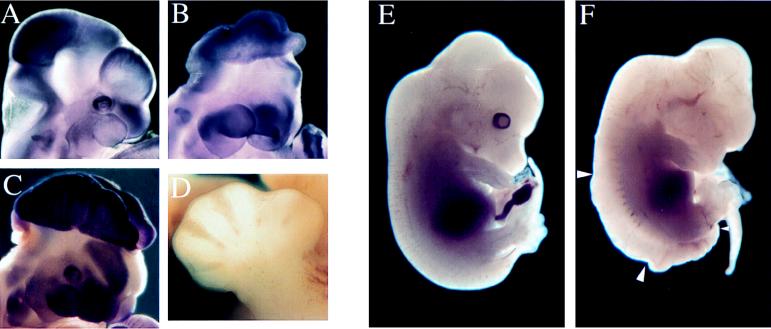Figure 2.
Exencephalic mutants. (A–C) Embryos stained for endogenous alkaline phosphatase activity. (A) Head of 10.5-dpc wild-type embryo. (B) Exencephalic 10.5-dpc 118 (opb2) embryo lacking visible eyes. (C) Exencephalic 11.5-dpc line 25 embryo. (D) Most line 118 embryos died between 12.5 and 14.5 dpc, but those that could be scored had an extra anterior digit, shown here on the left forelimb of a 13.5-dpc 118 embryo. (E and F) Littermates (13.5 day) from a 118/+ X opb/+ cross. (E) Embryo with wild-type phenotype and genotype. (F) Genotypically 118/opb embryo: normal eyes were not present, the dorsally exposed neural tube between the large arrowheads was like that of opb homozygous embryos (18), and the more posterior neural tube had not closed (between the large and small arrowheads). The genotype of these embryos was determined based on the alleles of flanking DNA polymorphisms present in yolk sac DNA. A similar recurved tail was seen in some 118 homozygous embryos.

